If you’ve never had the experience of growing leeks, you don’t know what you’re missing!
This straight-laced member of the allium family has a milder flavor than onions, and it’s extremely cold hardy, making it a great choice for Northern gardeners looking for fresh vegetables in the dead of winter.
To reap the fancier flavor of leeks for your cooking, you’ll also have to do some fancier planting. Unlike onions, which can be grown from sets that you just pop into the soil, leeks must be grown from seed. These plants are slow growers, so the sooner you get started, the more robust your seedlings will be come spring.
Here are some helpful tips for growing leeks in your homestead garden.
Plan Ahead To Start Seeds Early
It’s almost never too early to start growing leeks indoors, especially if you live in a climate with a long, cold winter. I usually start my leek seeds sometime during the last week of January so that they’ll be big enough to set outside by early April. Like onions, leeks can handle being transplanted outdoors about four to six weeks before your frost-free date—basically as soon as you can work the soil in the spring.
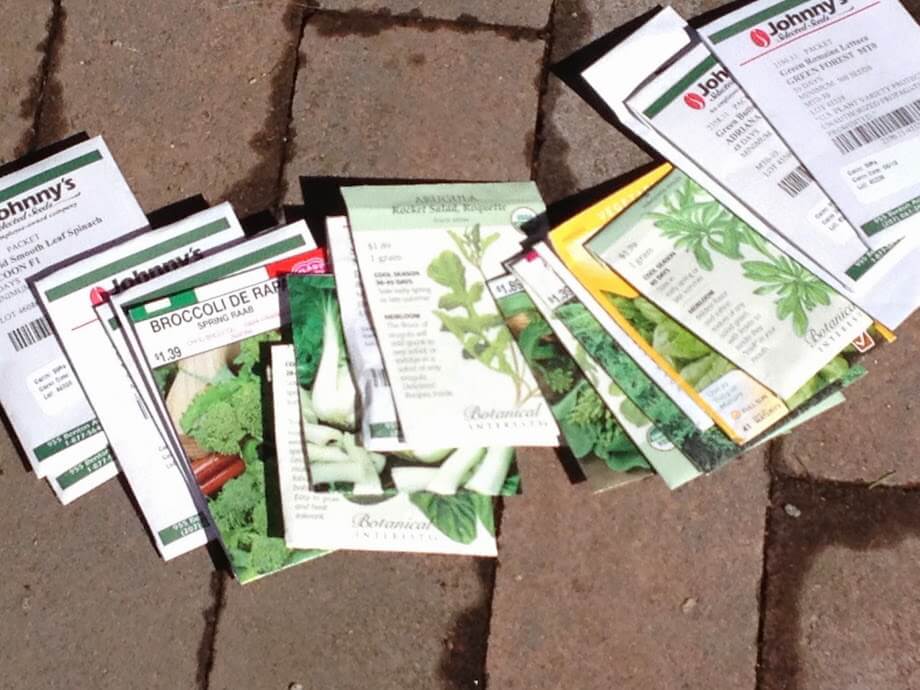
To calculate your seed starting date, count backward from your frost-free date by six weeks to get your transplant date. Then count back another 10 weeks for your seed starting date. (The nearest weekend is fine.)
If that ends up being in January for you, too, be sure to order seeds on New Year’s Day so you’ll have them ready to go in time—many nurseries won’t have new stock yet. I really like curling up with a good seed catalog and planning the garden to celebrate the New Year, and it sure beats nursing a hangover!
Sowing The Leek Seeds
Leek seeds are tiny, so I find it easier to sow them in a self-watering seed flat with individual cups. It’s perfectly fine to use a more traditional seed flat as well. Use a light, organic seed starting medium—potting soil is too heavy—and water it several hours before you plant so the soil can absorb all the water.
To plant seeds, I use the eraser end of a pencil to make a small divot in the dirt and then drop in a seed. Use the pencil tip to just barely cover the seed, and mist the surface with a spray bottle when you’re finished.
Place the seed flat onto a self-watering tray and mat and cover with a clear plastic greenhouse dome or plastic wrap. Finally, place the whole thing in the sunniest window you have and fill the watering tray with warm water.
Growing Leeks From Seed
The beauty of seed starting is that you don’t have to do much of anything for several weeks, but you get to enjoy the excitement of watching your seeds sprout and develop their long, slender leaves. Once your seeds sprout in a week or two, remove the plastic dome to prevent rotting, and be sure to add water to the tray every few days as needed.
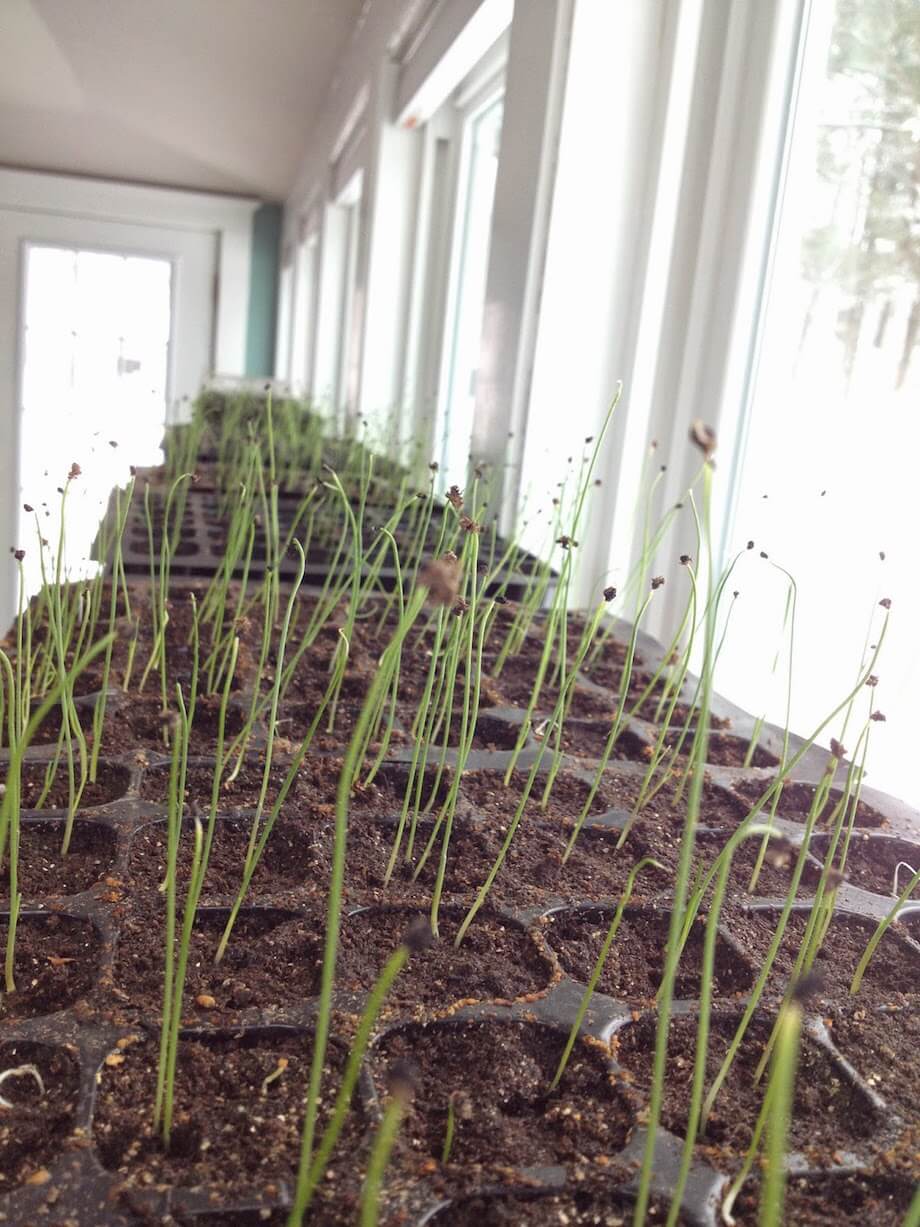
The beauty of growing leeks is that the seeds do well in cool temperatures, so you won’t need to provide any extra heat. If you have a stretch of very cloudy weather, you might consider growing leeks under a light to supplement. Though you don’t need to fertilize your seedlings, your fish tank can provide a little natural boost at the six-week mark if you water the soil with wastewater from your tank.
Thining Leek Seedlings
I usually wait to thin until my leeks have developed an extra leaf (which will look more like a second stem, because it’s so long and thin). Even when I plant my leeks in separate cups, I often have extra seeds in the pot because they are so small—it’s just too easy to drop in more than one. Gently pull out the ones you don’t want, but don’t compost them: leek thinnings make a tasty topping for a salad or baked potato.
Hardening Off Your Leek Seedlings
Two weeks before you plan to transplant your leek seedlings outdoors, you’ll need to get them ready for the elements. It’s not just the cold that will shock your baby leeks: Harsh wind and sun will also kill them if you’re not careful (I speak from sad experience!).
Hardening off your seedling requires a fair amount of moving the trays in and out of your house, first to a location outside that sheltered from the sun and wind. Later you’ll need a sunny spot with little wind, and finally, you’ll move the seed trays to your garden. To avoid damage to the tender leaves, follow this schedule for hardening off your seedlings:
- Day 1: 1 hour outside in shelter
- Day 2: 2 hours outside in shelter
- Day 3: 4 hours outside in shelter
- Day 4: 8 hours outside in shelter
- Day 5: 11 hours outside in shelter, 1 hour outside in full sun
- Day 6: 14 hours outside in shelter, 2 hours outside in full sun
- Day 7: outside in shelter overnight (they won’t come inside anymore), 4 hours in full sun
- Day 8: in shelter except for 8 hours in full sun
- Day 9: move seed flat to the area where it will be planted for full day, water if necessary
- Day 10: plant them out (or wait until the weekend, but the seed trays can stay in the garden now)
If you expect a severe freeze below 28 or 30 degrees F, bring your seedlings in and repeat the day you were on when you resume hardening. You may also have to pause the process for high winds or to account for overcast days with little sun exposure.
Preparing The Soil For Growing Leeks
As soon as you can work the soil, turn a good two to three inches of compost into your planting plot. Plant leeks six inches apart in rows six inches apart. I prefer to plant my leeks in wide patches rather than long, slender rows—it’s easier to cover in greenhouse tunnels or cold frames later.
Work the soil deeply, since it’s best to plant leeks deeply from the start, leaving only an inch or two of the very tip exposed above the earth (I measure to my second knuckle). This allows for the largest possible portion of your leek to stay underground allowing it to blanch and stay white and tender. Planting deep will also save you the trouble of hilling them up later. That’s a big bonus, since scooping dirt over you leeks throughout the season fills the leaves with a lot of grit—a total nuisance when you’re ready to cook.
Planting The Leek Seedlings
To plant the leek seedlings, gently remove the seedling from the planting pot, using the lead tip of a pencil to help ease it out of the soil without breaking the root. If the root is very long, trim it back to an inch or two using scissors or by giving it a pinch with a sharp thumbnail against your forefinger.
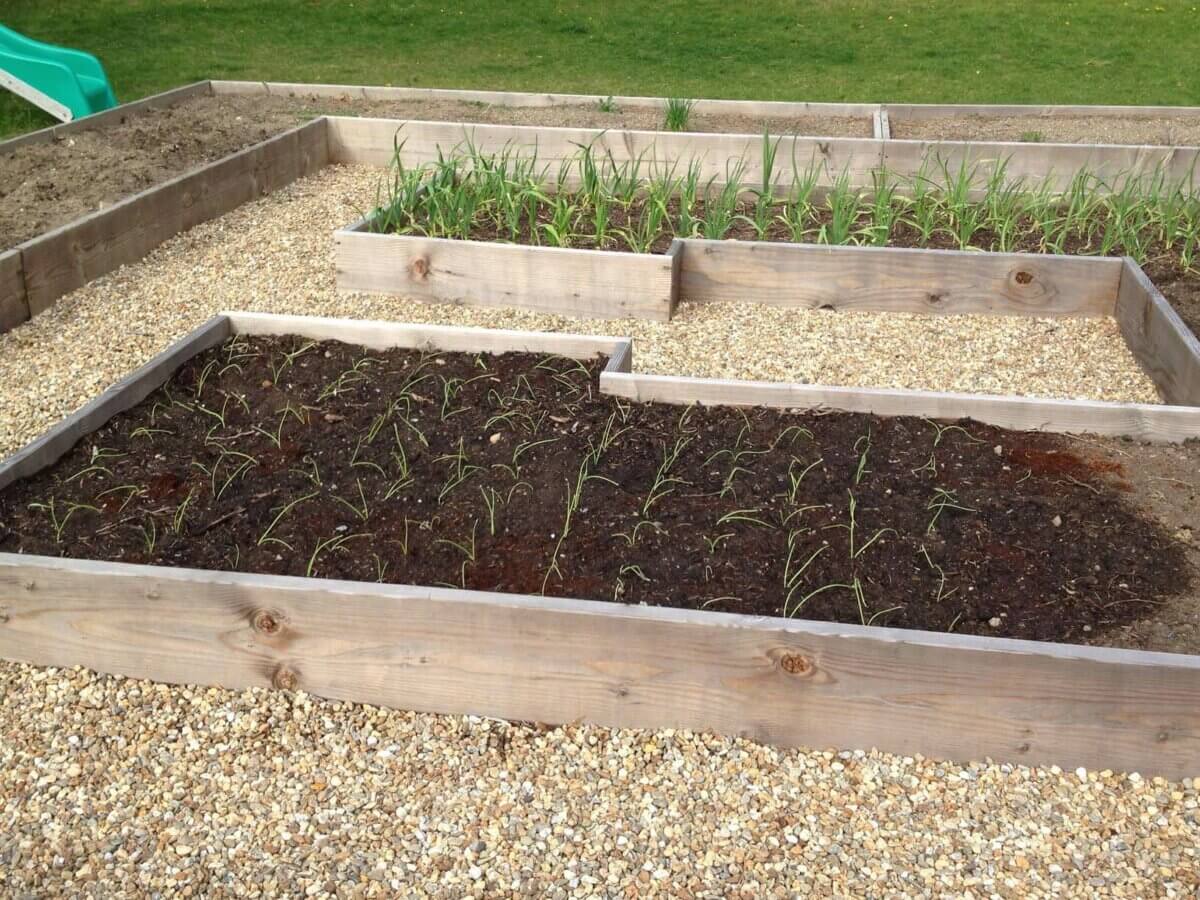
Use the handle of a wooden spoon like a dibbler to help you slide the leek into place. To do this, insert the handle straight into the soil and then pull it towards you to clear a chute between the soil and the handle. Slide your leek in place along the spoon handle; then remove the spoon and firm the soil around the leek. There should only be a small tip of leek left above the surface.
Caring for Leeks
After all your leeks are planted, water well. Like most vegetables, leeks do well with an inch of rain per week, though they can handle drought quite well once established since their roots are so far below the surface.
I usually top dress with compost in June for an extra bit of mulch and fertilizer in one shot. Leeks grow quite slowly and won’t be ready to harvest until they’re about two inches in diameter.
Related Post: How To Cook Leeks
You can harvest leeks beginning in the fall and continuing well into the winter, especially if you protect them with a cold frame or some plastic tunneling. Leeks will even survive through several freezes, as the root is quite comfortable beneath the soil long after most of your garden has given up the ghost.





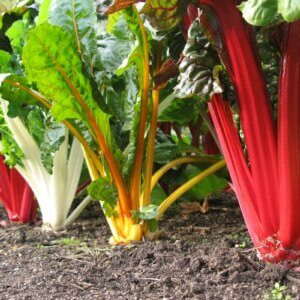

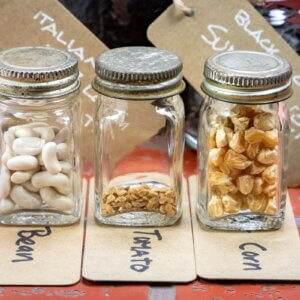































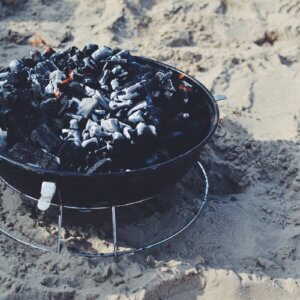


You statement on only being able to grow leeks from seeds in incorrect. Perennial leeks or multiplying leeks can be grown from bulblets.
I am unable to digest Onions and garlic (IBS) but a small amount of green leek tops is great to flavour soups and stews. I can’t manage the white parts. I find if I leave the flower head on the plant til it dries out I can rub it into the soil and eventuality get lots of little plants. But we live in a frost free area where nearly everything grows well.